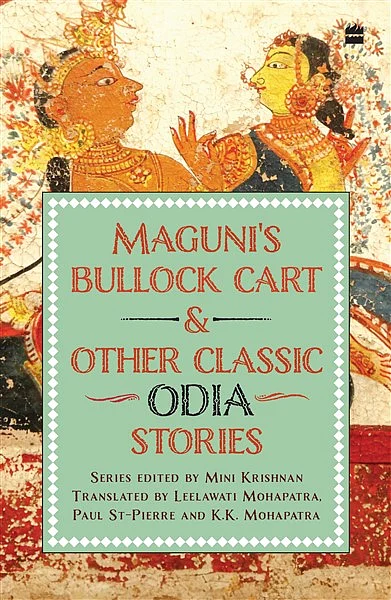“A translation has to be true to the translator no less than to the originals.”—A.K. Ramanujan
The Early Classics series, published by HarperCollins India, gives readers a welcome chance to journey back to the past. The stories in the series—written in Kannada, Odia and Malayalam during the late 19th to the mid-20th centuries—have been translated into English for the first time.
In her Introduction to the three short story collections in the series, Series Editor Mini Krishnan—a prominent presence in the sphere of translated literature in India—explains the genesis of the project. It all began when she started to wonder: “What will happen to those writers who were no longer with us but were the reason we are where we are in terms of tastes, styles, experiments and themes?” The thought of the “sun setting on our literary past, where pre-modern met modern” was worrying.
The stories in the series span a range of literary traditions. Themes range from class and caste divides and gender politics to faith, friendship, love, bureaucratic apathy and corruption. The narratives, peppered with the writers’ insights, capture the major social and cultural churnings of the time. Some of them are experimental in terms of form. Some put a new spin on old plots. The translators have taken care to preserve the original flavours of the stories that are rooted in specific regional milieus. Thanks to them, the collections seamlessly transport you to three different parts of India and to a different time.
The Malayalam anthology includes memorable tales such as Vengayil Kunhiraman Nayanar’s ‘Dwaraka’, considered to be the first short story in the language in the fantasy genre; Moorkoth Kumaran’s ‘Just a Glimpse’, which makes a strong statement against regressive rituals; T.N. Nambi’s ‘Kunju Namboodiriyude Randam Veli’, a well-crafted critique of Namboodiri men’s practice of marrying multiple times; B. Kalyaniamma’s humorous story ‘Nambiar’s Secret’; C.C. Ammal’s detective tale ‘A Case of Homicide’; and V.A. Amma’s engaging ‘Oru Podikkai’ about a wife who is determined to reform her neurotic husband.
Also Read | Book Review: The Early Classics Series
The Kannada collection features Panje Magesharaya’s ‘At A Teashop in Kamalapura’, which is said to be the first modern Kannada short story; Ajjampur Sitaram’s ‘The Girl I Killed’, which delves into India’s complex cultural landscape; pioneering writer and editor N. Thirumalamba’s ‘The Child, A Teacher’; Triveni’s ‘Two Ways of Living’; and Sara Aboobacker’s ‘Between Rules and Regulations’, among others. The Odia anthology includes Fakir Mohan Senapati’s ‘Rebati’, a moving story about a young girl’s thirst for learning; Suprabha Kar’s ‘The Long Wait’; Harischandra Badal’s ‘The Tiger’; and Rajkishore Ray’s ‘Bauli’ and K.C. Panigrahi’s ‘Victory Celebration, both of which criticise government policies in their own subtle way.
The translators’ Introductions to the story collections are both engaging and illuminating. They painstakingly trace the arc of the short story in the languages featured. Their notes take you on a rewarding journey through pre- and newly independent India, dissecting the relationship between Indian language writing and English over the years; the evolution of women writers in Malayalam, Kannada and Odia; and the vital role of translators in the literary landscape.
The translators share the challenges they faced in sourcing and selecting the stories from a vast pool; transcribing some of them by hand from the archives; getting the necessary permissions; and finding the original publishers, some of who have shut shop by now. Their notes are also a reminder of the fact that a venture like this shaped by many committed individuals: the series editor and other editors, the translators themselves, and writers (literary critic and author Dr M.M. Basheer was a driving force behind the selection of the Malayalam stories).
Since three translators worked on the collection of Odia stories, they ask in their introductory note, “If the translation resonates with the readers, does it matter whether one or three translators were involved?” A rhetorical question of course, but they do go on to tell readers that the three of them “harmonised beautifully, like the three musketeers”.
These behind-the-scenes glimpses provided by the translators at the start of each collection take readers through the process of putting them together. They also offer readers context about the times when the stories were written as well as slices of literary and cultural history. These notes help to draw readers closer to the heart of the series.
The stories featured in the Early Classics are a portal through which you can enter an India that now exists only in memory, or in books. They evoke the customs, cadences, and atmosphere of a different time, but also remind us that we are not all that different from those who came before us, and the stories we tell and the concerns that preoccupy us are inextricably linked despite the passage of years.














